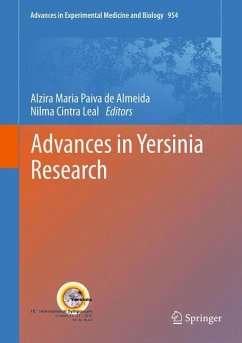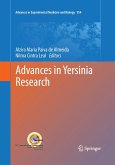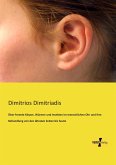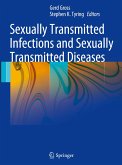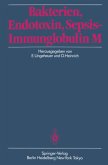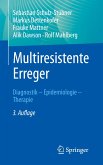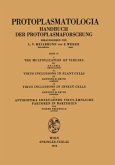Advances in Yersinia Research
Herausgegeben:de Almeida, Alzira Maria Paiva; Leal, Nilma Cintra
Advances in Yersinia Research
Herausgegeben:de Almeida, Alzira Maria Paiva; Leal, Nilma Cintra
- Gebundenes Buch
- Merkliste
- Auf die Merkliste
- Bewerten Bewerten
- Teilen
- Produkt teilen
- Produkterinnerung
- Produkterinnerung
This book presents cutting edge advances on Yersinia discussed on the 10th International Symposium on Yersinia held in Recife, Brazil 23-27 October 2010. The 42 chapters written by top scientists from around the world features reviews and research articles distributed into 8 topic areas: Evolution; Epidemiology; Detection, Diagnosis and Identification; Immune Response; Pathogenesis and Transmission; Metabolic and Pathogenicity Factors; Regulation; and Approaches to New Therapies. A must read for researchers in the field.
Andere Kunden interessierten sich auch für
![Advances in Yersinia Research Advances in Yersinia Research]() Advances in Yersinia Research154,99 €
Advances in Yersinia Research154,99 €![Über fremde Körper, Würmer und Insekten im menschlichen Ohr und ihre Behandlung von den ältesten Zeiten bis heute Über fremde Körper, Würmer und Insekten im menschlichen Ohr und ihre Behandlung von den ältesten Zeiten bis heute]() Dimitrios DimitriadisÜber fremde Körper, Würmer und Insekten im menschlichen Ohr und ihre Behandlung von den ältesten Zeiten bis heute32,50 €
Dimitrios DimitriadisÜber fremde Körper, Würmer und Insekten im menschlichen Ohr und ihre Behandlung von den ältesten Zeiten bis heute32,50 €![Sexually Transmitted Infections and Sexually Transmitted Diseases Sexually Transmitted Infections and Sexually Transmitted Diseases]() Sexually Transmitted Infections and Sexually Transmitted Diseases155,99 €
Sexually Transmitted Infections and Sexually Transmitted Diseases155,99 €![Bakterien, Endotoxin, Sepsis ¿ Immunglobulin M Bakterien, Endotoxin, Sepsis ¿ Immunglobulin M]() Bakterien, Endotoxin, Sepsis ¿ Immunglobulin M54,99 €
Bakterien, Endotoxin, Sepsis ¿ Immunglobulin M54,99 €![Multiresistente Erreger Multiresistente Erreger]() Sebastian Schulz-StübnerMultiresistente Erreger59,99 €
Sebastian Schulz-StübnerMultiresistente Erreger59,99 €![The Multiplication of Viruses / Virus Inclusions in Plant Cells / Virus Inclusions in Insect Cells / Antibiotika Erzeugende Virus-ähnliche Faktoren in Bakterien The Multiplication of Viruses / Virus Inclusions in Plant Cells / Virus Inclusions in Insect Cells / Antibiotika Erzeugende Virus-ähnliche Faktoren in Bakterien]() Salvador E. LuriaThe Multiplication of Viruses / Virus Inclusions in Plant Cells / Virus Inclusions in Insect Cells / Antibiotika Erzeugende Virus-ähnliche Faktoren in Bakterien81,99 €
Salvador E. LuriaThe Multiplication of Viruses / Virus Inclusions in Plant Cells / Virus Inclusions in Insect Cells / Antibiotika Erzeugende Virus-ähnliche Faktoren in Bakterien81,99 €![Advances in Nuclear Architecture Advances in Nuclear Architecture]() Advances in Nuclear Architecture116,99 €
Advances in Nuclear Architecture116,99 €-
-
-
This book presents cutting edge advances on Yersinia discussed on the 10th International Symposium on Yersinia held in Recife, Brazil 23-27 October 2010.
The 42 chapters written by top scientists from around the world features reviews and research articles distributed into 8 topic areas: Evolution; Epidemiology; Detection, Diagnosis and Identification; Immune Response; Pathogenesis and Transmission; Metabolic and Pathogenicity Factors; Regulation; and Approaches to New Therapies.
A must read for researchers in the field.
Hinweis: Dieser Artikel kann nur an eine deutsche Lieferadresse ausgeliefert werden.
The 42 chapters written by top scientists from around the world features reviews and research articles distributed into 8 topic areas: Evolution; Epidemiology; Detection, Diagnosis and Identification; Immune Response; Pathogenesis and Transmission; Metabolic and Pathogenicity Factors; Regulation; and Approaches to New Therapies.
A must read for researchers in the field.
Hinweis: Dieser Artikel kann nur an eine deutsche Lieferadresse ausgeliefert werden.
Produktdetails
- Produktdetails
- Advances in Experimental Medicine and Biology 954
- Verlag: Springer / Springer New York / Springer, Berlin
- Artikelnr. des Verlages: 80043963, 978-1-4614-3560-0
- 2012
- Seitenzahl: 392
- Erscheinungstermin: 12. Juli 2012
- Englisch
- Abmessung: 260mm x 183mm x 26mm
- Gewicht: 896g
- ISBN-13: 9781461435600
- ISBN-10: 1461435609
- Artikelnr.: 34985050
- Herstellerkennzeichnung Die Herstellerinformationen sind derzeit nicht verfügbar.
- Advances in Experimental Medicine and Biology 954
- Verlag: Springer / Springer New York / Springer, Berlin
- Artikelnr. des Verlages: 80043963, 978-1-4614-3560-0
- 2012
- Seitenzahl: 392
- Erscheinungstermin: 12. Juli 2012
- Englisch
- Abmessung: 260mm x 183mm x 26mm
- Gewicht: 896g
- ISBN-13: 9781461435600
- ISBN-10: 1461435609
- Artikelnr.: 34985050
- Herstellerkennzeichnung Die Herstellerinformationen sind derzeit nicht verfügbar.
Evolutionary dynamics of the Yersinia enterocolitica.- Gains and losses in Yersinia enterocolitica subsp. palearctica genomes.- Consequences of Missense Mutations in Yersinia pestis: Efficient flow of Metabolic Carbon versus Virulence.- Diversity and adaptive evolution of major porin gene (ompF) in Yersinia pseudotuberculosis.- Biochemical and Genetic Peculiarities and the Phylogenetic Relationship of the Non-main Subspecies in the General Scheme of the Plague Agent Evolution.- The molecular phylogeny of gyrB gene: a molecular marker for systematic of Yersinia.- Preliminary survey regarding Yersiniosis in Ireland.- Pseudotuberculosis in Russian Federation.- Plague in Brazil: now and then.- Factors Affecting the Spread and Maintenance of Plague.- Isolation of enteropathogenic Yersinia from non-human sources.- Yersiniosis by Yersinia pseudotuberculosis o iii causes diarrhea in Brazilian cattle.- Prevalence, Serotype, Virulence characteristics, Clonality and Antibiotic susceptibility of pathogenic Yersinia enterocolitica from swine feces.- Characterization of Yersinia enterocolitica 4/O:3 isolated from swine in slaughterhouses and pork in State of São Paulo.- Bacteriophages capable of lysing Yersinia pestis and Yersinia pseudotuberculosis: efficiency of plating tests and identification of receptors in Escherichia coli K-12.- Field and clinical applications of advanced bacteriophage-based detection of Yersinia pestis.- Plague diagnosis STNPCR and M-PCR kits assembly, reaction reproducibility and reagent stability.- Innate immune responses during infection with Yersinia pestis.- The life stage of Yersiniapestis in the flea vector confers resistance to host polymorphonuclear leukocyte phagocytosis and killing.- Phagocytes and humoral immunity to pneumonic plague.- In vitro evaluation of antiplague cellular immunity by quantitative analysis of IFN-Gamma synthesis and appearance of activation molecules on the surface of T-helpers.- Cytotoxic necrotizing factor is an effective immunogen in a Yersinia pseudotuberculosis aerosol mouse model.- Fimbrial polyadhesins: anti-immune armament of Yersinia.- Yop effector proteins from Yersinia pseudotuberculosis impair dendritic cells activation.- Impact on the host of the Yersinia pestis specific virulence set and contribution of the Pla surface protease.- Virulence of Yersinia pseudotuberculosis in aerosol models.- Pathogenic potential of Yersinia massiliensis species.- Modulation of host cell death pathways by Yersinia and the type three secretion effector YopK.- Biofilm-dependent and biofilm-independent mechanisms of transmission of Yersinia pestis by fleas.- YopM and Plague.- Substrates of the plasminogen activator protease of Yersinia pestis.- Variability of the functional domains of the Rho-modifying toxins of Yersinia pseudotuberculosis.- Yersinia pestis transition metal divalent cation transporters.- Unique virulence properties of Yersinia enterocolitica O:3.- Yersinia pestis autoagglutination is mediated by hcp-like protein and siderophore Yersiniachelin.- Yersinia surface structures and bacteriophages.- Global discovery of small non-coding rnas in pathogenic Yersinia species.- Regulation of virulence gene expression by regulatory RNA elements in Yersinia pseudotuberculosis.- OmpR, a central integrator of several cellularresponses in Yersinia enterocolitica.- Bacteriophage therapy of experimental bubonic plague in mice.- Preliminary pharmacokinetics of the bacterial virulence inhibitor N'-(3,5-dibromo-2-hydroxy-benzylidenene)-nicotinic acid hydrazide.- Small molecule screening for inhibitors of the YopH phosphatase of Yersinia pseudotuberculosis.
Evolutionary dynamics of the Yersinia enterocolitica.- Gains and losses in Yersinia enterocolitica subsp. palearctica genomes.- Consequences of Missense Mutations in Yersinia pestis: Efficient flow of Metabolic Carbon versus Virulence.- Diversity and adaptive evolution of major porin gene (ompF) in Yersinia pseudotuberculosis.- Biochemical and Genetic Peculiarities and the Phylogenetic Relationship of the Non-main Subspecies in the General Scheme of the Plague Agent Evolution.- The molecular phylogeny of gyrB gene: a molecular marker for systematic of Yersinia.- Preliminary survey regarding Yersiniosis in Ireland.- Pseudotuberculosis in Russian Federation.- Plague in Brazil: now and then.- Factors Affecting the Spread and Maintenance of Plague.- Isolation of enteropathogenic Yersinia from non-human sources.- Yersiniosis by Yersinia pseudotuberculosis o iii causes diarrhea in Brazilian cattle.- Prevalence, Serotype, Virulence characteristics, Clonality and Antibiotic susceptibility of pathogenic Yersinia enterocolitica from swine feces.- Characterization of Yersinia enterocolitica 4/O:3 isolated from swine in slaughterhouses and pork in State of São Paulo.- Bacteriophages capable of lysing Yersinia pestis and Yersinia pseudotuberculosis: efficiency of plating tests and identification of receptors in Escherichia coli K-12.- Field and clinical applications of advanced bacteriophage-based detection of Yersinia pestis.- Plague diagnosis STNPCR and M-PCR kits assembly, reaction reproducibility and reagent stability.- Innate immune responses during infection with Yersinia pestis.- The life stage of Yersiniapestis in the flea vector confers resistance to host polymorphonuclear leukocyte phagocytosis and killing.- Phagocytes and humoral immunity to pneumonic plague.- In vitro evaluation of antiplague cellular immunity by quantitative analysis of IFN-Gamma synthesis and appearance of activation molecules on the surface of T-helpers.- Cytotoxic necrotizing factor is an effective immunogen in a Yersinia pseudotuberculosis aerosol mouse model.- Fimbrial polyadhesins: anti-immune armament of Yersinia.- Yop effector proteins from Yersinia pseudotuberculosis impair dendritic cells activation.- Impact on the host of the Yersinia pestis specific virulence set and contribution of the Pla surface protease.- Virulence of Yersinia pseudotuberculosis in aerosol models.- Pathogenic potential of Yersinia massiliensis species.- Modulation of host cell death pathways by Yersinia and the type three secretion effector YopK.- Biofilm-dependent and biofilm-independent mechanisms of transmission of Yersinia pestis by fleas.- YopM and Plague.- Substrates of the plasminogen activator protease of Yersinia pestis.- Variability of the functional domains of the Rho-modifying toxins of Yersinia pseudotuberculosis.- Yersinia pestis transition metal divalent cation transporters.- Unique virulence properties of Yersinia enterocolitica O:3.- Yersinia pestis autoagglutination is mediated by hcp-like protein and siderophore Yersiniachelin.- Yersinia surface structures and bacteriophages.- Global discovery of small non-coding rnas in pathogenic Yersinia species.- Regulation of virulence gene expression by regulatory RNA elements in Yersinia pseudotuberculosis.- OmpR, a central integrator of several cellularresponses in Yersinia enterocolitica.- Bacteriophage therapy of experimental bubonic plague in mice.- Preliminary pharmacokinetics of the bacterial virulence inhibitor N'-(3,5-dibromo-2-hydroxy-benzylidenene)-nicotinic acid hydrazide.- Small molecule screening for inhibitors of the YopH phosphatase of Yersinia pseudotuberculosis.

